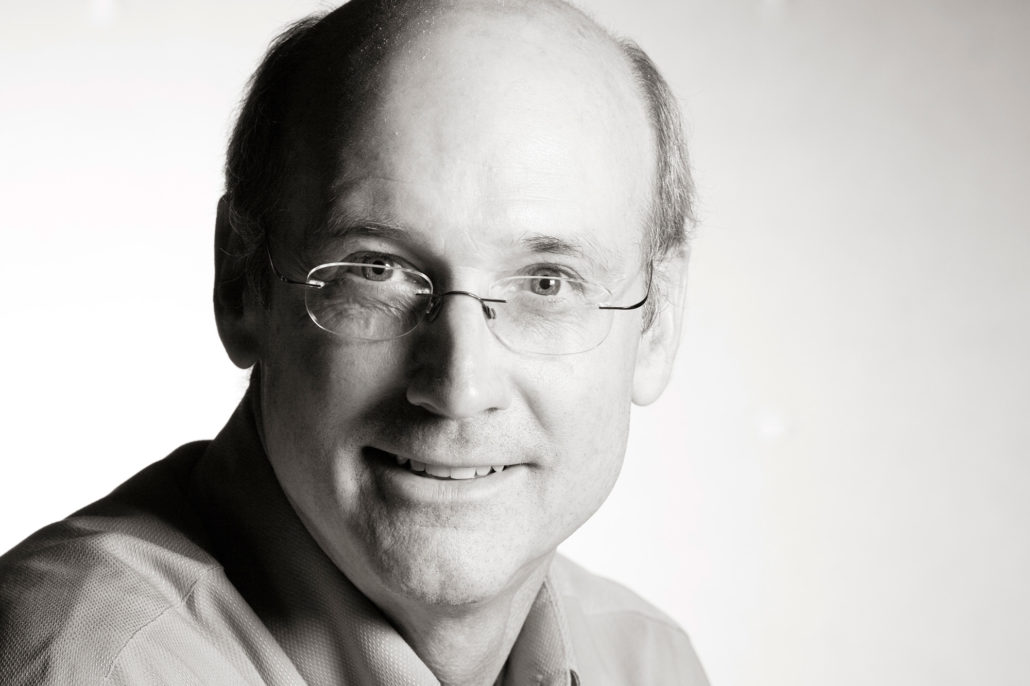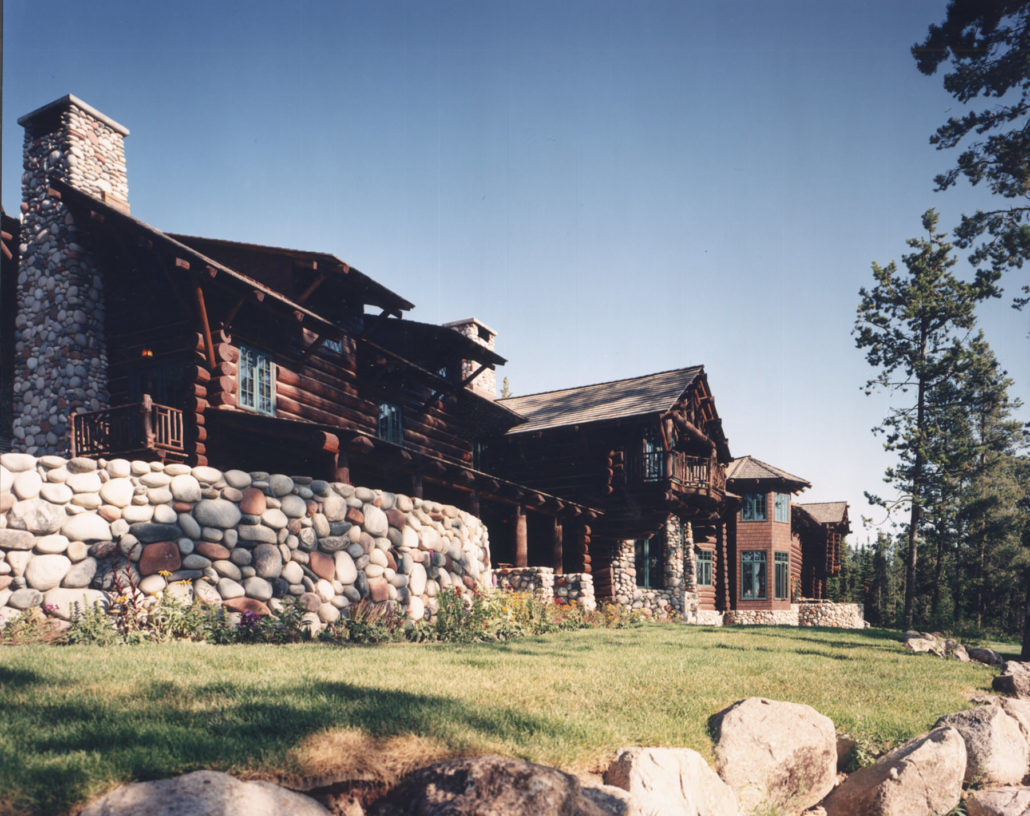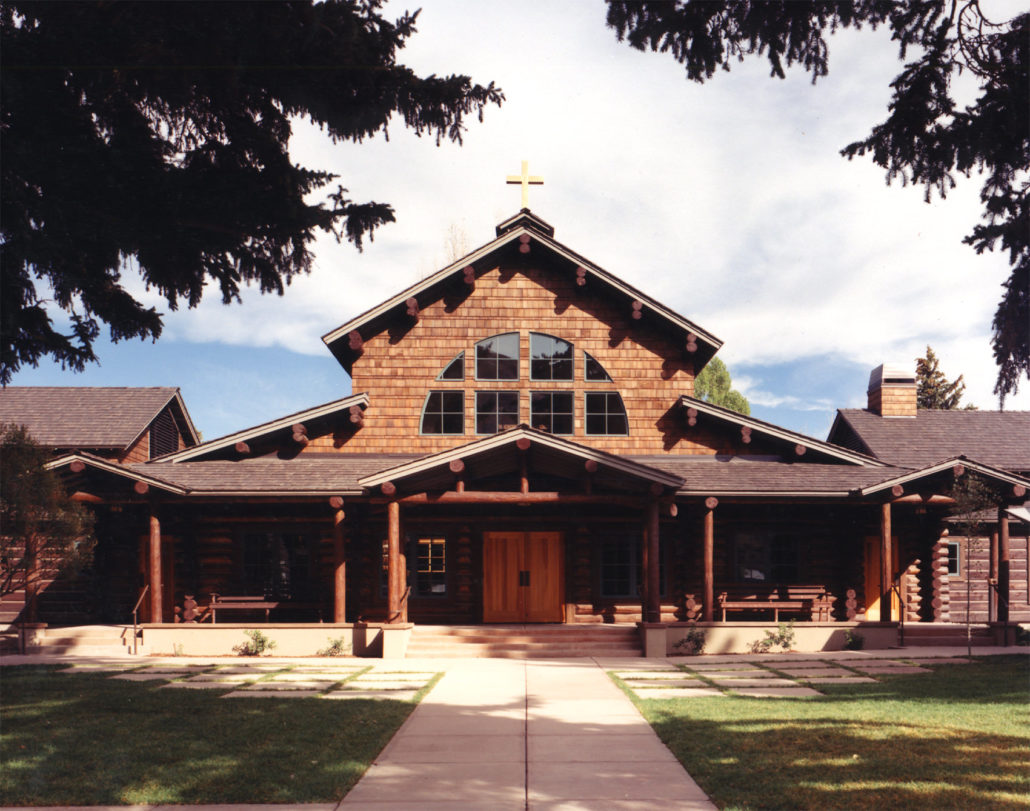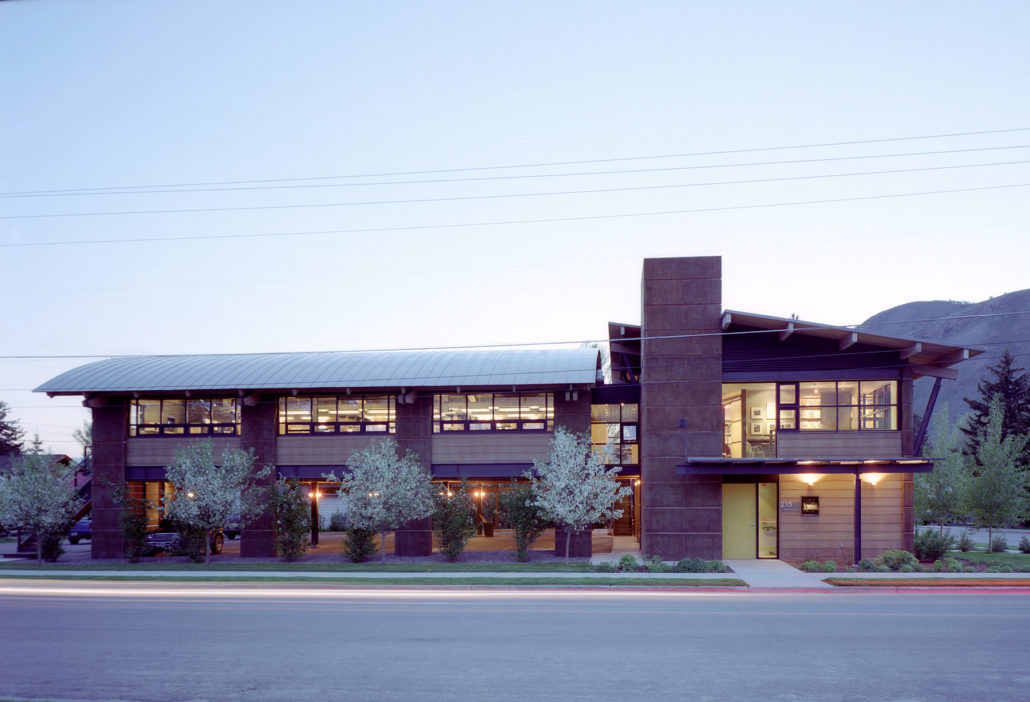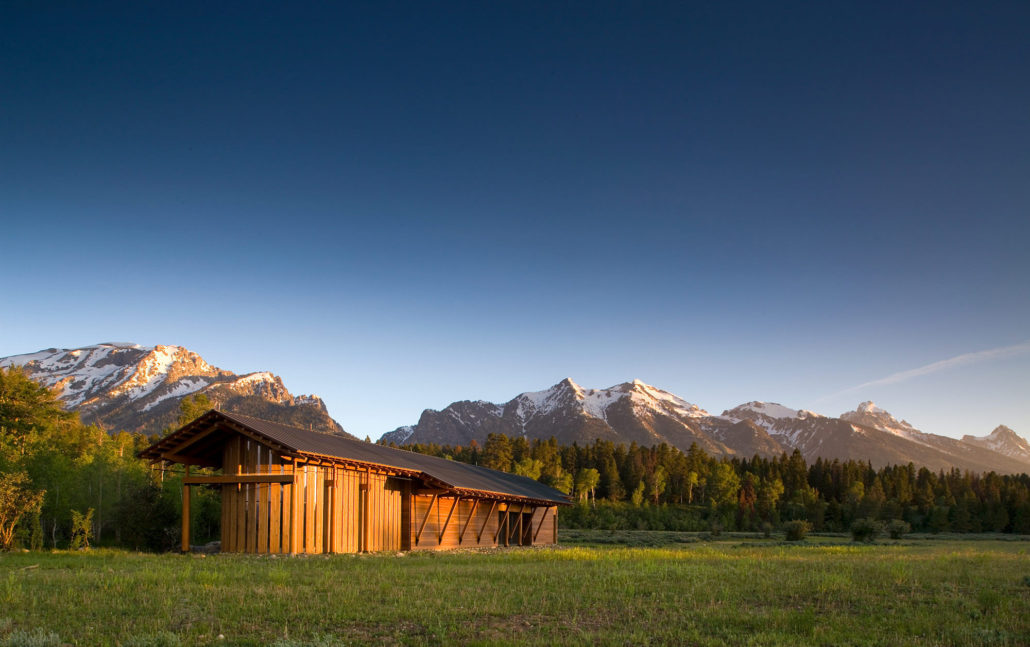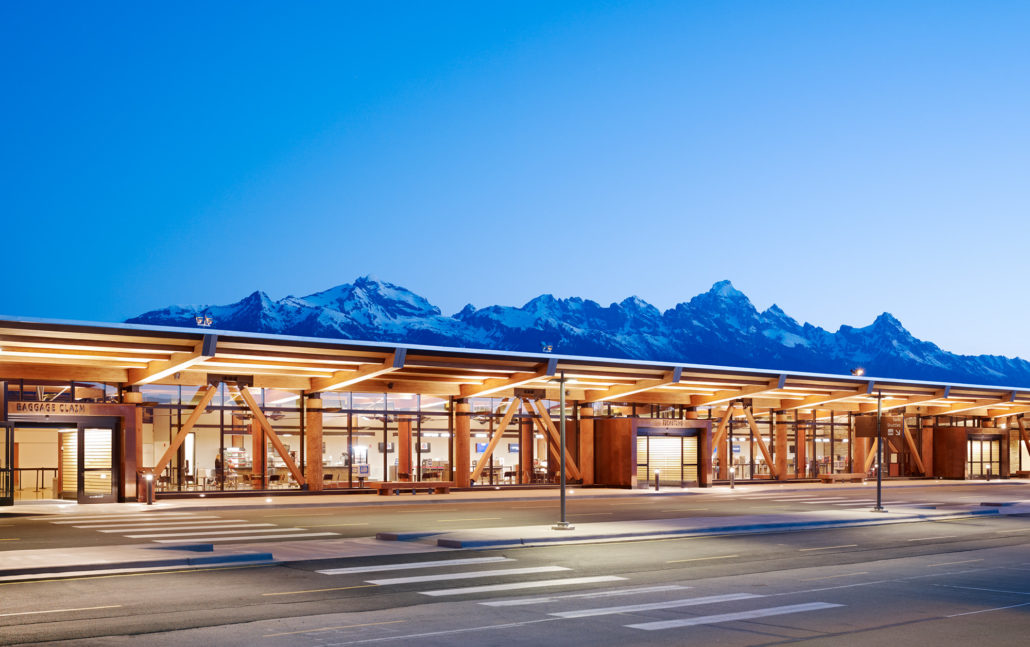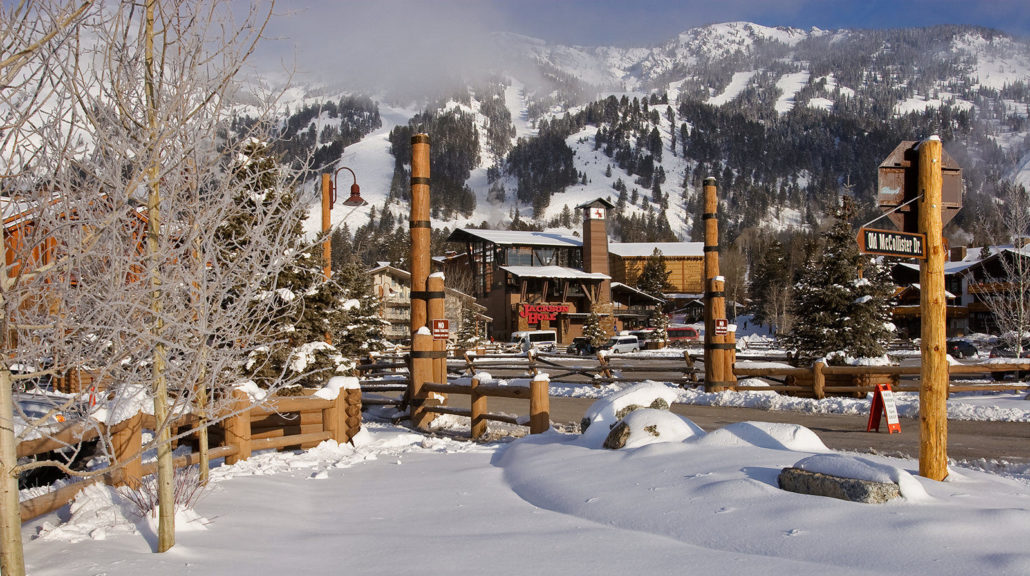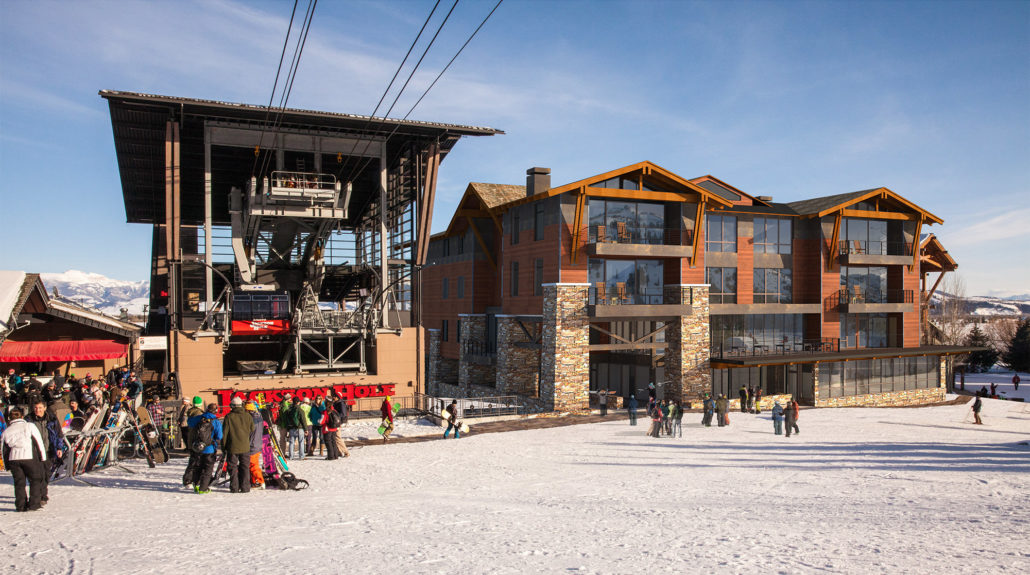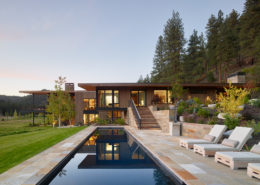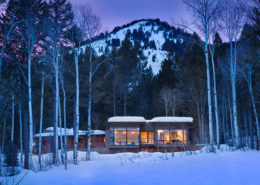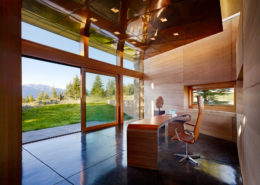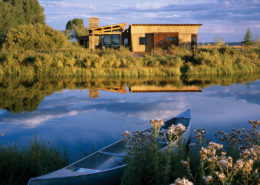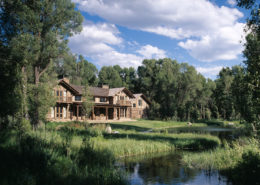As a teenager, John Carney lived between Beverly Hills, California and Cora, Wyoming, spending summers at his family’s ranch on the Upper Green River, away from his father’s Hollywood career. After studying architecture at Stanford University and then Harvard Graduate School of Design, he cut his teeth in Chicago and Denver. But Wyoming called him back, and so, nearly three decades ago, he planted his practice in the Tetons. A dedicated member of the community, Carney served on the Teton County Planning Commission and the Board of County Commissioners, espousing smart planning and progressive design. Ever involved in civil discourse, he sat down with TCCG to reflect on the past, present and future of the built landscape in Jackson Hole.
You grew up spending summers on your family’s ranch on the Upper Green River. How did those early experiences in nature inform your professional practice?
The philosophy of our firm really goes back to the summer experiences that I had on the ranch in Cora, Wyoming. I like to describe this as sort of a Beverly Hillbillies in reverse because my dad was a screenwriter in Hollywood and therefore had a pretty portable profession in writing. He always had this notion of owning a ranch in Wyoming. So when I was 13 years old, after several years of looking, my father found this beautiful place on the Upper Green and decided to purchase it. That was in the summer of 1963. It was a long time before my parents abandoned LA but every summer was spent on the ranch.
I’d always had this great love of western and agrarian buildings—how natural they were, how they fit into the environment. Whether a lodge for a national park or a ranch building, they felt appropriate in their sense of western character. I always loved them. In fact, when my father was researching where to buy property, he took us all around the West. Those tours made a big impression on me. I remember one in particular up in Montana; the copper baron Con Kelley had this absolutely gorgeous place—many, many buildings. I remember the atmosphere of walking into these dark, log buildings with big two-story spaces and animal skins on the walls. It really resonated.
Fast forward many years ahead and I have now gone to the most European, abstract architecture programs espousing modernism—which is Harvard Graduate School of Design. After moving to Chicago and then Denver, I found myself back in Jackson, trying to design buildings that were completely different from what I had studied in school. But for that, I relied on my earlier love of all of these western structures that I had grown up in my later youth appreciating.
By the time I moved here, I had just completed a large project for Walt Disney—the Fort Wilderness Lodge and Resort in Orlando. For that project, I toured all of the great lodges of the West (at Disney’s expense), including the Ahwahnee Lodge in California and Yellowstone of course. Our project was most directly influenced by the Inn at Old Faithful—a greatly enlarged version. I still have hundreds of slides from that study.
When I moved here, I thought, “I know how to do these Western buildings. I’ve been studying this. It’s part of me and my background.” The firm we built was based on those values: Buildings inspired by place—the core theme of our firm.
You have been a leader in expanding the design vocabulary in Jackson Hole and your imprint informs every corner of the valley from the park (Laurance S. Rockefeller Preserve) to downtown Jackson (the Center for the Arts) to name only two from your wide portfolio. What projects do you consider to be milestones of not only your career but also the community’s experience of your work?
Going back to when I first moved here, there definitely was a sense that if you came to Wyoming, you needed to live in something rustic. A log building seemed most appropriate. The first house that I did in Jackson Hole was a very large lodge. If you didn’t know any better, you might think it was built in the 1920s or 30s in the national park. It was very much inspired by that kind of landscape-driven buildings that grew out of nature with boulders and such—many of which you see in Yellowstone today. That felt right at the time. We work for our clients, so when a client came and said, “We love the lodges of the national parks, we want you to do something like that,” that’s what we would do. We embraced it, and we did some great buildings as a result.
Responding to the question of which buildings are the most relevant, I still take pride in St. John’s Church, which was our first opportunity to do a more public building. The only other large building we had completed at the time was that house I mentioned up in Crescent H—a big, rambling, 14,000 sq.ft. house (before the County implemented the 8,000 sq.ft. cap). St. John’s Church was an amazing project for me personally. It was a way for me to get involved in the community. It allowed us to do a more public building, one that is truly beloved and beautiful. We created a building that had the character of the 75-seat chapel that existed there but accommodated 250-people without losing the sense of scale or that rustic woodiness. It was very appropriate to be doing that kind of work when we first moved here.
As time went on and our firm grew, some clients started to say, “You know, we love log houses, but we don’t want to live in one.” And by that time, there was a lot of emphasis on green, sustainable design. Everyone knows that log cabins are leaky; even with new technology, logs still don’t perform as well as other building types. And I was getting a little bored with doing the same log cabins over and over again in different forms. As the firm grew and I managed to attract really talented people who are now my partners, we started to think, “Isn’t there more in life than log buildings?” So we started pushing the envelope a little and that goes to your question about where we were trying to define a new style for the West that was not such a pastiche. At Disney, it was one thing; we were trying to make people in Florida think they were back in the Old West. But here, I really resisted the notion that Jackson should somehow be preserved in time as if in amber. I felt we could push to introduce new building types like the office building we are in now (215 South King Street). We had to get something like six variances to use some cast-in-place concrete, to lift up the parking and put it under the building. Those were just some of the things we felt we needed to do because it was the right thing to do and the community was ready for it. At the time, an out-of-state architect came in, Will Bruder, and did the new library and a couple of other buildings, and it really infuriated people. But in a way, he was able to—because he didn’t live here and he wasn’t part of the community. He was able to do his thing whether people liked it or not. He emboldened some of the architects here to say, “Hey, wait a minute, we can do that too, without being out of step with the community.”
Our firm evolved because we had clients who were less and less enamored of doing a romantic, rustic, redo of something that could have been built in the 30s. Our clients wanted to do buildings more of their time. To my mind, even the Laurance Rockefeller Preserve is a building that, while it has some traditional forms, still has a nice, clean, almost modern look to it. You don’t look at it and say, “Was this building here in the 20s when John D bought the ranch?” No, you know it’s a new building. It was obviously one of the highlights of my career. I am still trying to find the next Laurance Rockefeller Preserve.
I think another building that has impressed a lot of people is Jackson Hole Airport. We worked with Gensler—they were the lead architect and we were the design consultant. It was a great collaboration and a chance to take an airport that had been added on to badly and make a statement out of it. Now people think it’s one of the nicest airports in the United States. It really sets the tone. When you step off the airplane onto the tarmac and you walk through the new entrance, you know you are not in Kansas anymore. You know that you’ve arrived at this very western place. It’s appropriate. We’ve always been treading the fine line between wanting to do new, creative, original work, work that responds to our current clients’ needs but that also hews to the principals of the West that have been engrained in me from youth.
How has the built landscape in Jackson Hole changed over the course of your tenure in the valley? What do you hope to see in the next 5 to 10 years?
This community resists change. It’s part of the frustration many of us have who see a vision of Jackson that is allowed to change and evolve with the times. As a Planning Commissioner and a County Commissioner, I had opportunities to attend smart growth seminars and learn a lot about what intelligent cities were trying to do to deal with today’s problems. Over all of these years, I have been frustrated that very little has been done, and it’s because of that fear of change. I would like to go to a Town Council meetings with a picture of Jackson in 1905, to show how we went from this tiny town into what we are today. If we look 20 years to the future, why shouldn’t we have a town that continues to look different? I have been a big proponent of the mixed-use development tool, which creates vitality in downtown by bringing living over other uses like commercial. It’s just been a struggle. There is pushback on anything more progressive because Jackson is such a beautiful place and everybody wants to make sure we don’t harm it. It’s pretty easy to mobilize people on every side of the debate. My frustration is that as an architect, I feel like we can design beautiful three-, even four-story buildings in town, put housing in them, do other things, and remove barriers on the development of the kinds of projects we want. The town is changing, but it’s been very slow. The problems we face today with traffic and housing require some density. If you put more people living together in a denser area, the bus service works—more people are 100 feet from the bus instead of a mile. It’s sad to me that more people don’t realize that connection. I love the quote of someone getting up at a public meeting and saying, “You know, the one thing I hate more than density is sprawl.” Well, you are going to get one if you don’t have another. It’s hard not to get up on a soapbox about this. I’ve been an avid supporter of smart, progressive planning that will make this place more vital and will allow the people who work here to live here.
What other aspects of building your design career in Jackson would you like to discuss?
One of the things that is really important to acknowledge in the development of Jackson is our incredible winter business. We are blessed to have a world-class mountain that God gave us. We are blessed to have people like the Kemmerer family, who are willing to invest. They are not a corporate owner sitting on Wall Street trying to maximize their profits. They have made a unique and amazing resort here, and that has created this year-round economy. I wasn’t here then, but back in the 60s, you could barely stay alive during the winter. The ski resort has changed that in a major way. What is happening in Teton Village is very exciting, both on the mountain with the new lifts but also on the ground at the base of the village and Shooting Star. A successful village that works well with Town will have more housing; some of the people who work up at the village and even elsewhere in Town will actually be able to live in the village as well, and that will mean there will be more services like a real grocery store. The completion of our transit master plan will increase public transportation options. Our problems are going to take these multiple solutions—like new buses added to Alpine and over the hill, acknowledging that not everybody’s going to live in Jackson. These are exciting times. The quality of the mountain resort and now Shooting Star has changed the whole mix. We have been discovered as a community that is beautiful and pristine, that is the gateway to two national parks. People are not going away. They will not be kept away. We cannot stick our heads in the sand. This inevitability inspires me to look to good design to help deal with some of these problems.
One of the distinguishing characteristics of our community is that sense of community, i.e. the way that people care: they go to Town Council meetings and they give public comment. In the business world, this sense of community is very important to the success of contemporary ventures such as CLB and TCCG. What does that sense of community mean to you as you run CLB and collaborate with kindred companies like TCCG?
Early on, I established that we, as a firm, would be part of this community. We are rooted here in a way that when a local project comes up, we go after it. We try and do things that enhance the community because we are part of the community. My partners and I have all served on boards. Eric Logan has been a long-suffering member of the Design Review Committee (I only say that because a lot of stuff comes up and it takes a lot of time). I spent four years on the Planning Commission and two years on the County Commission. This work is all part of our commitment to the community and wanting to make it a better place. Businesses are very much a part of that, including new members of the community like Ali Cohane of Persephone Bakery and Picnic. I don’t want people like Ali to be barred from coming here because the entry fee is too high or the regulatory environment is too restrictive. Some groups don’t want anything to happen and therefore will not allow this vitality and new business. I remember the late Alan Hirschfield, owner of Snake River Grill, used to say, “Hey, I don’t mind all of these regulations you guys are putting on because no one is going to be able to open a new business to compete with mine!” Obviously, that has not been entirely true. But when you throw in parking and housing requirements, it gets tricky. It’s very important for architects like us who are so much a part of the community to feel like we are vested members and support other businesses.
Our relationship with The Clear Creek Group has been amazingly strong. I’ve known Phil Stevenson ever since he moved here and started establishing the company. His method of client services means that he is bringing people out, they are renting houses from him, they are getting to know the community and then they come to him and say, “Phil, we are ready to buy a house, do you know a good architect? Do you know a good builder?” That is where Phil has excelled: he puts all of the components together in a way that yields great results for his client, instead of leaving someone who doesn’t know this community to go through the phone book and find an architect. Phil puts the whole package together, and we have been his wingman on those deals. It’s been a great venture for us, a much more targeted form of marketing than me buying ads in a magazine. We feel it’s been a really good relationship. This is true with a lot of the real estate community here; there are strong ties between realtors and architects. Sometimes, we are right there with the client looking at three or four lots, to help them evaluate properties long before they buy and hire an architect. We help them wade through a lot of complex issues: Where is the water table? What are the soils like under this particular property? What are the design guidelines going to be like? If the client wants to do a super modern house in a conservative subdivision, we will raise our hand and say, “You might not be able to do the house you want if you buy here.” The Clear Creek Group and Carney Logan Burke have been very much aligned in that philosophy of trying to help clients through this complicated process.
One last question: How do you define good design?
One could devote a book to that. For us, there is an honesty to our approach about design. I get frustrated when I flip through magazines and see buildings with various forms— a curve here, a box there. Good design hangs together. Good design derives from a series of values and a series of ideas, including formal ideas about how physical things should happen in space—how a roof should be done in snow country where there are earthquakes and lateral forces. It’s perplexing when I see someone come in and do a super complicated roof, how is that ever going to be maintained over the life of a building?
Our approach is more reductive. It’s about honesty of structure and form. It’s where I’ve arrived as I’m getting older and I know my partners agree. Mies van der Rohe said, “Less is more,” which used to get parodied a bit because modernism was so spare. But “less is more” is a good motto in today’s world especially where excess is so prevalent. When I see somebody spend $300,000 on a bathroom, I’ve coined the phrase, “Why pay less?”
A formative moment for me was when I first went out to what is now the Laurance Rockefeller Preserve; it was the JY Ranch back then, still in the hands of the Rockefeller Family. I went out and toured those cabins. Some didn’t have any plumbing in them. They were truly rustic. It started as a dude ranch, and over the years, the Rockefellers added some plumbing and amenities, but not much. What I appreciated from that experience was how one of America’s most prominent, wealthiest families chose to live in such a rustic way. One time, I might have gotten in trouble when a client of ours was pushing for a super expensive bathroom and all the amenities. I just mentioned that the Rockefellers managed to live here in a much more low-to-the-ground way. I don’t think they appreciated that. But it’s true: You can choose to embrace the place you are in, or you can try and bring elements from elsewhere. I am proud that our work feels like it belongs here, even if it is a little bit over the top. It’s pretty easy to coddle ourselves today with modern amenities—heating systems, AV, all of the stuff we have. Now, more than ever, the best designs are the ones that are honest. They don’t try to add a lot of visual noise. They are about the place.

